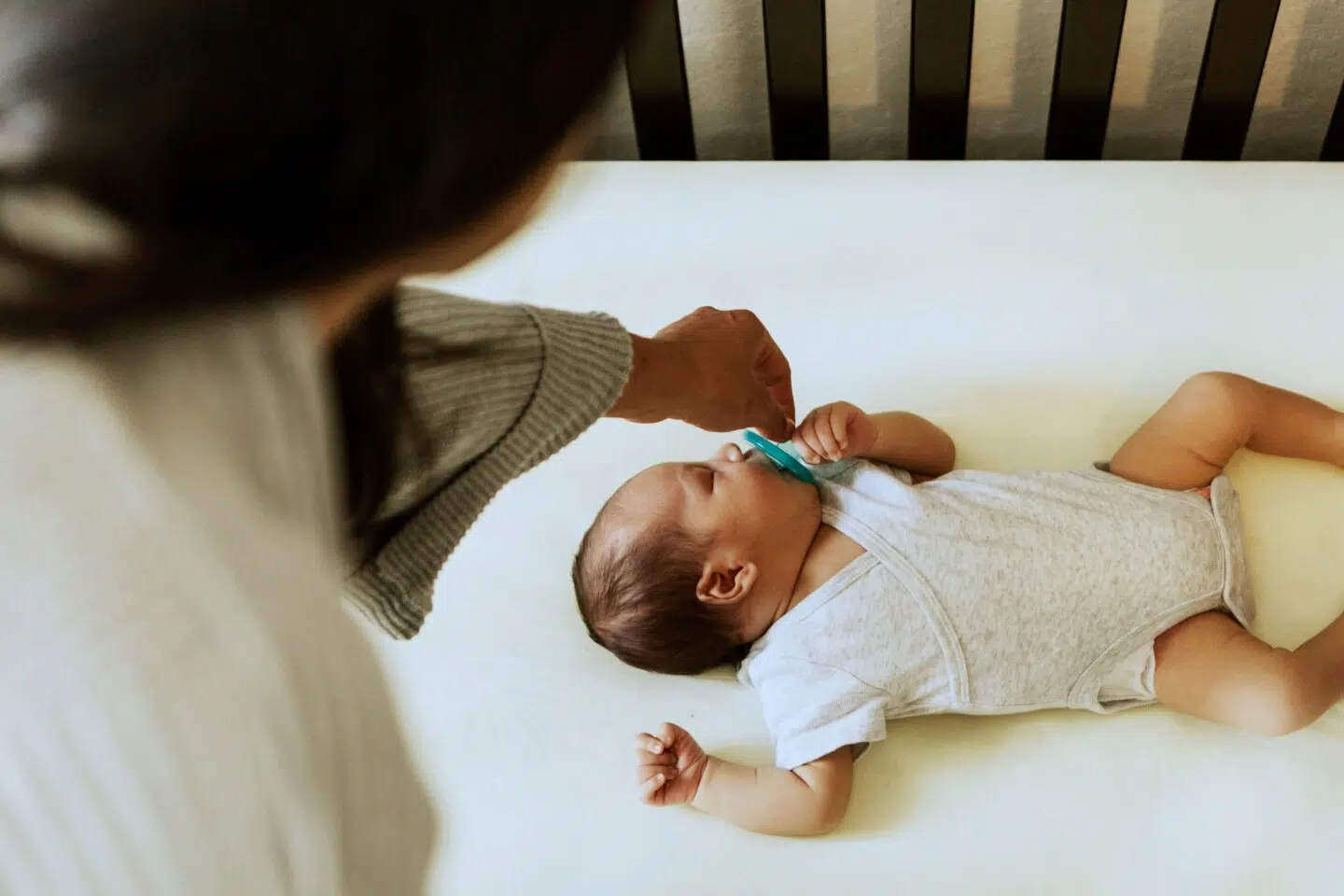
Being a parent to a new baby can be overwhelming for so many reasons. Everyone has an opinion on how you should raise your baby, from how often you hold your baby to the “right” way for sleep training and everything in between. We put together this read with the top safer sleep practices every parent and caregiver should know.
Sleep Position
Placing your baby on their back for both naps and night’s sleep for the first year of life is always the safest.
When your baby starts showing signs of attempting to roll, swaddling should no longer be used. This will roughly around two months old. Swaddling infants may cause them roll more easily from back to stomach and not be able to use their arms to support, so it is important to monitor this and make the adjustments to a sleep sack for a safer option.
What if the baby likes to sleep on their stomach?
If a baby is put on their back and rolls on to their own stomach, in this instance it is not necessary to adjust their position.
Tummy Time – placing your baby on their stomach while awake is important for your baby to develop different muscles and motor skills. However, tummy time should always be when the baby is awake and supervised.
*If the baby falls asleep, they should be placed on a safe sleep surface on their back.
Placing the baby to rest on their back is the safest sleep position. If they are able to roll both ways and roll to their stomach while sleeping, you do not need to return them to their back.
Sleep Surface and Area
The safest option is to put the baby to sleep on a firm, flat surface.
Sleep surfaces can vary depending on cultural tradition, space and mobility. The most important thing is to put baby to sleep on a firm, flat surface.
Below are examples of firm, flat sleep surfaces other than bassinets, cribs or Pack N’ Plays that may be used:
Below are examples of traditional tribal sleep surfaces:
Navajo Tribe style
Grand Ronde Chairwoman Cheryle A. Kennedy sits down to talk about cradleboards as a safe sleep option for children. Video courtesy of the Tribe’s Child & Family Services.
Many traditional sleep surfaces have been around for a long time. Some of the safest traditional sleep surfaces come from American Indian/Alaska Native (AI/AN) or First Nations (FN) traditions. If you are caring for an AI/AN or FN child, some traditional sleep surfaces may be available. These include:
Cradleboards or baskets, which are common across many AI/AN tribes, and
Moss bags, which are common among Canadian First Nations and Woodlands AI/AN Tribes.
American Indian and Alaska Native communities may have originated the concept of “Back to Sleep” with the use of traditional baby sleep devices. Although the specific design of the sleep devices differ between Tribes, the baby is placed on their back and swaddled into place in a safe and secure environment.
Rates of infant death and SIDS are high in many American Indian or Alaska Native communities, and using these traditional methods is a good way to keep baby safe. If you are unaware of specific Tribal safe sleep practices, contact the baby’s Tribe to learn more. Understanding how to use traditional Tribal sleep devices is critical to keeping the baby safe.
No matter what container or device is used, the surface should be firm and flat. If the sleep surface can’t accommodate a snug fitting mattress, it is safer to place the baby on the firm, uncovered surface than it is to use a pillow or other soft or loose surface.
Here are some examples of soft surfaces or objects that babies should not be left to sleep on, in or with include:
Soft mattresses
Pillows
Blankets, comforters and quilts
Other loose bedding (such as non-fitted sheets)
Sheepskins
Bumper pads
Stuffed toys, and
Infant positioners (products designed to keep an infant in a certain position, such as wedges, padded tubes or mats with side bolsters).
Sleep Location
Room sharing with your baby for the first year of life is recommended by the American Academy of Pediatrics to promote breast/chest feeding, bonding, and safety.
Room sharing refers to an baby sleeping in the same room as a caregiver, but not sharing the same surface.
While knowing that parents frequently fall asleep while feeding an baby, evidence suggests that it is safer to fall asleep with the baby in the adult bed the on a sofa or armchair.
Bed sharing is not recommended by the AAP as there are incredible risks of outside factors such as, soft, pillow-top mattresses, blankets and pillows that can create an unsafe sleep environment for your baby.
While bedsharing is not recommended by the AAP, there are many reasons why a parent chooses to bed share.
Safer precautions to consider if a parent or a caregiver choose to have their baby sleep in their adult bed:
-Wait until your baby is older than four-months old.
-remove pillows, quilts, or comforters.
-Do not have pets or other children the bed at the same time as the baby.
– Avoid sleeping on soft surfaces such as a waterbed, mattress topper, sofa, couch, or armchair
-Avoid bed sharing if the adult is actively smoking
-Avoid bed sharing if the adult has consumed alcohol, used substance that may impair them, taken sleep aids or if they are overly exhausted and there is a chance that they will not wake in an emergency.
Exhaustion is an inevitable part of parenting an baby. Developing a plan to lay the baby down to sleep safely when parents or caregivers are managing exhaustion. This plan goes on what is doable for the caregiver and may look like support for other alternative caregiver providing a scheduled or as-needed respite to allow the parent or caregiver to get uninterrupted sleep.
Smoke-Free Environment
Make sure the baby is in a smoke-free environment.
Secondhand is smoke inhaled from tobacco being smoked by others when the baby is in an enclosed spaces or sitting near someone smoking
Thirdhand is smoke is tobacco smoke toxins that remain after the cigarette is put out.
To reduce baby’s risk of exposure to thirdhand smoke, parents and caregivers can cover their clothing with a jacket or sweater, pull back long hair or wear a hat to cover their hair while smoking. After smoking, it is important to wash their hands and face and change any clothing that will come into direct contact with the baby. This will protect the baby’s vulnerable developing body systems.
Sleeping Temperature
Keep the room between 68 and 72 degrees Fahrenheit while baby is sleeping, or a temperature that a lightly clothed adult would feel comfortable in. The baby should use one more layer than the adult maximum.
Won’t my baby get cold without a blanket?
Instead of a blanket, use the general guideline of dressing an baby in clothes, sleepers or nonrestrictive sleep sack that provides one more layer. Hats can often be not needed a can cause baby to become overheated. It is safer to keep hats off while inside. Check often for signs of overheating such as, sweating, rosy cheeks etc.

